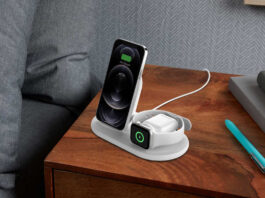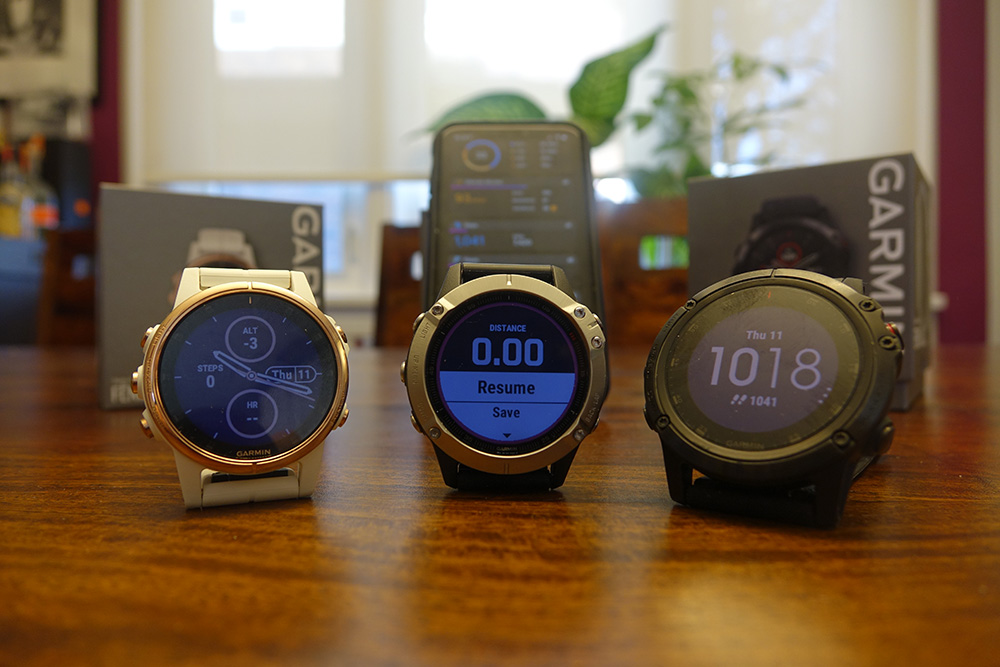
I have been wearing smartwatches for years, and while they are great for notifications on your wrist, what I really love are the health and wellness features. The premium ones can track not only exercise and sports but also other health data relating to sleep quality, stress, heart rate, and more, I can’t imagine going day to day without a smartwatch on my wrist. And the past few weeks, I have been alternating among three different ones from Garmin’s multisport GPS watch Fenix line-up: the Fenix 6, Fenix 5S Plus, and Fenix 5X Plus.
This provided an opportunity to compare these three models and discover to whom each would be best suited.
What is the difference among the Garmin Fenix 6, Fenix 5S Plus, and Fenix 5X Plus?
All three of these premium smartwatches are designed for those who are more serious about their fitness than the average user. And they employ similar designs and features. They all use the same app as well, Garmin’s Connect iQ with the same dashboard displaying information that can be collected by the device. But they differ in a few ways in not only in terms of design, but also in the data they can capture.
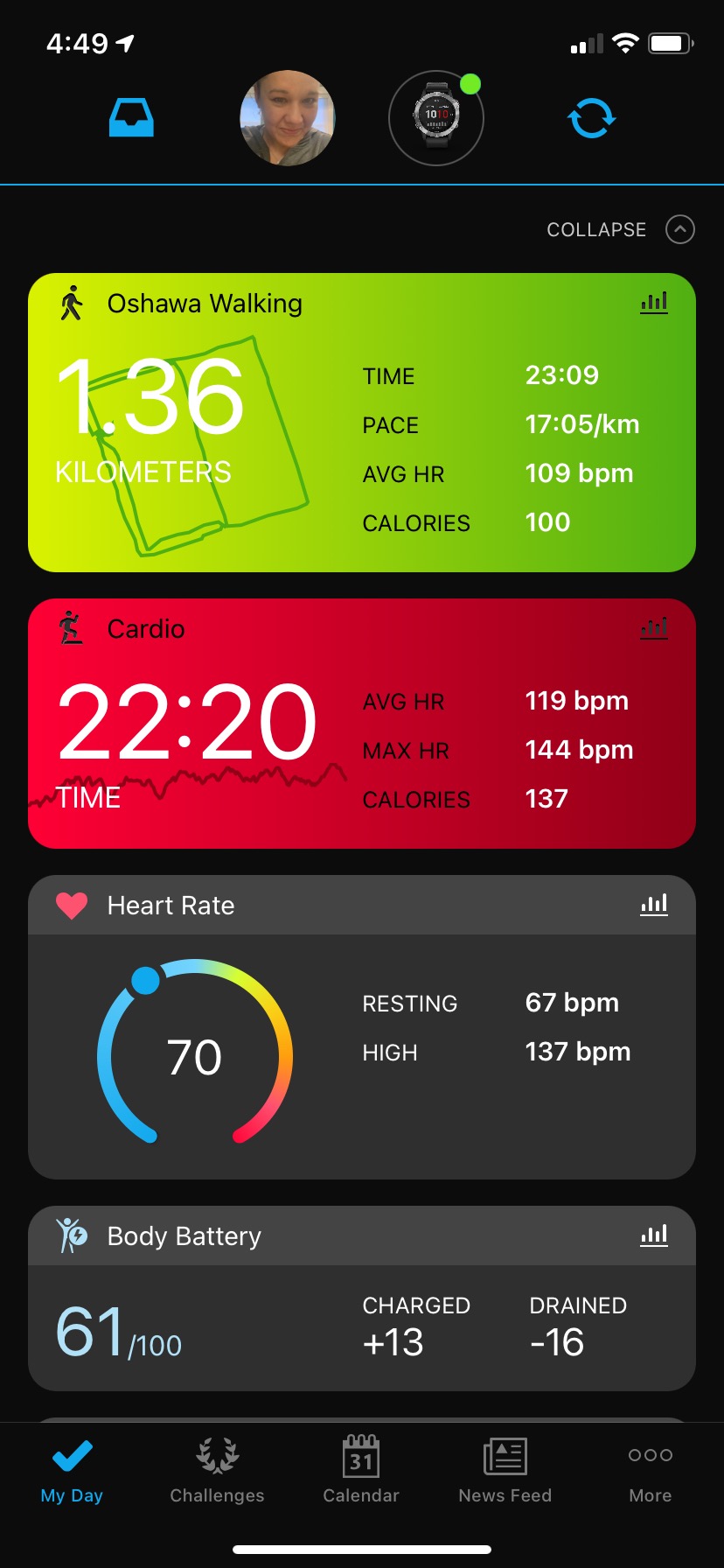
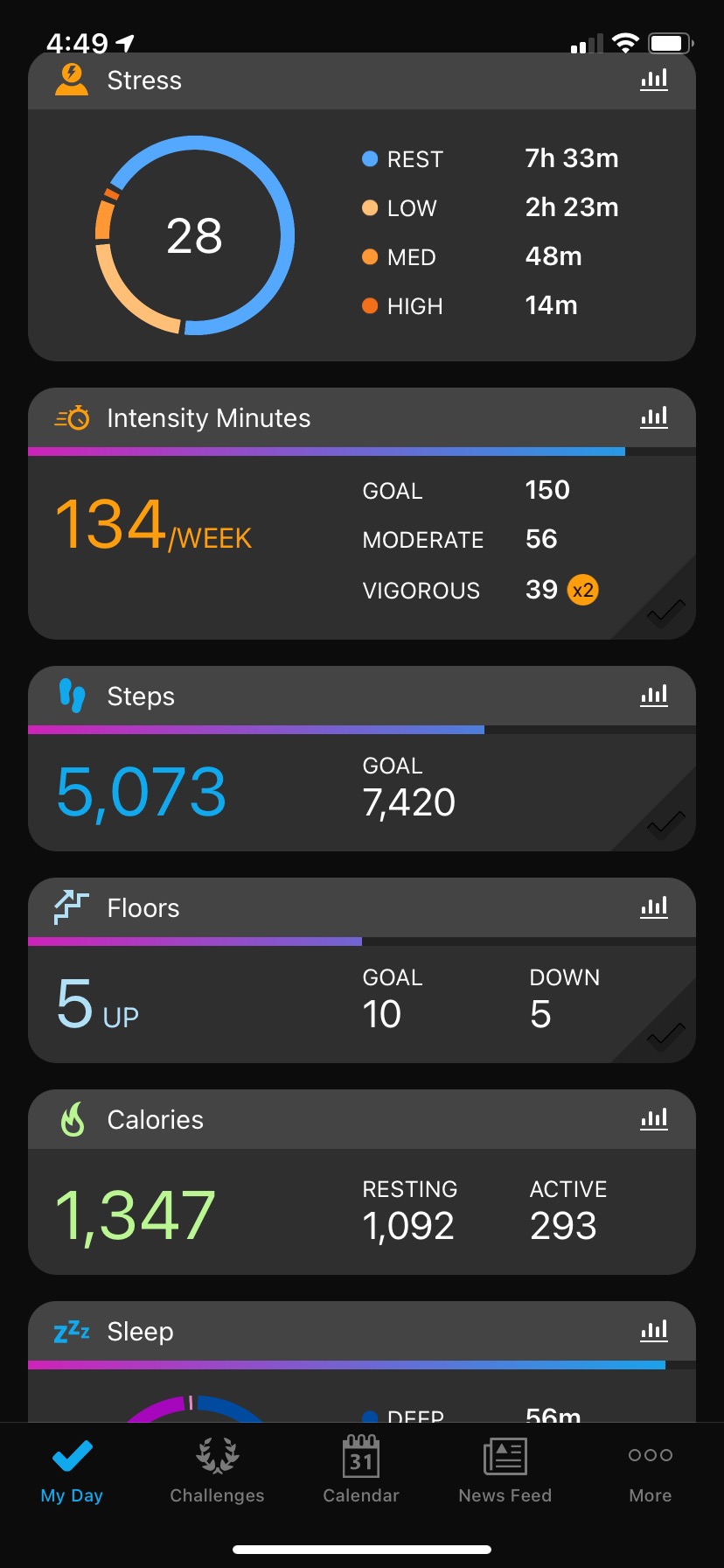 The Fenix 5S Plus and Fenix 5X Plus were both released in 2018, and differ in size, with the 5X Plus being much bigger. The 5S Plus was designed for smaller wrists, but this also means its battery doesn’t last as long. The 5X Plus has Pulse OX Acclimation, which is useful if you do a lot of hiking and climbing but won’t make much difference to the average person.
The Fenix 5S Plus and Fenix 5X Plus were both released in 2018, and differ in size, with the 5X Plus being much bigger. The 5S Plus was designed for smaller wrists, but this also means its battery doesn’t last as long. The 5X Plus has Pulse OX Acclimation, which is useful if you do a lot of hiking and climbing but won’t make much difference to the average person.
In 2019, Garmin released the Fenix 6, which also has Pulse OX along with improved battery life, GPS, more storage, and lots of on-screen data when you go for a run.
How did each fare? Let’s get to my review as I spent several days wearing each watch 24/7 while exercising at home, going for short runs and walks, and going about my regular day-to-day routines.
Garmin Fenix 6 review
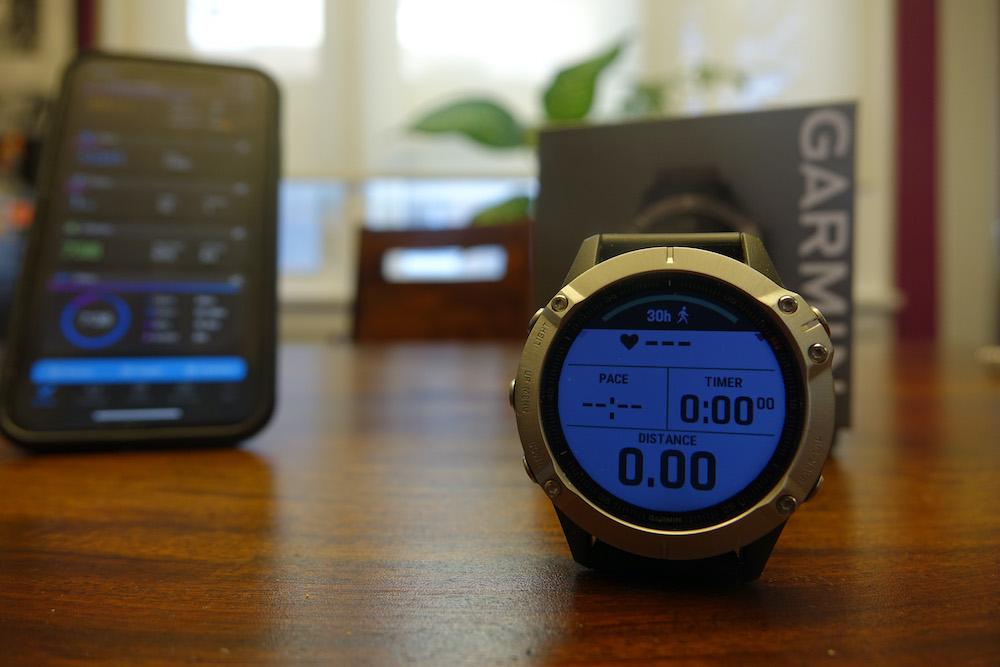
I started with the Garmin Fenix 6, which is the newest and more feature-rich of the three smartwatches. The model I tested is finished in black with silver and made from fibre-reinforced polymer with a metal rear cover. It’s bigger and bulkier than I like – you’ll feet some weight on your wrist. That said, it packs a lot of features, so you’d expect it to be less than dainty.
Set up was super simple: charge up the device, download the Garmin Connect app, register for an account, and it instantly recognized the watch and paired. I chose to permit access to all health data from my iPhone. I also allowed location permissions and calendar access for notifications. I was also asked to answer a few questions to set up my profile, such as my height, weight, gender, and age, and it used that to determine how quickly I burn calories, my BMI, and initial step goals.
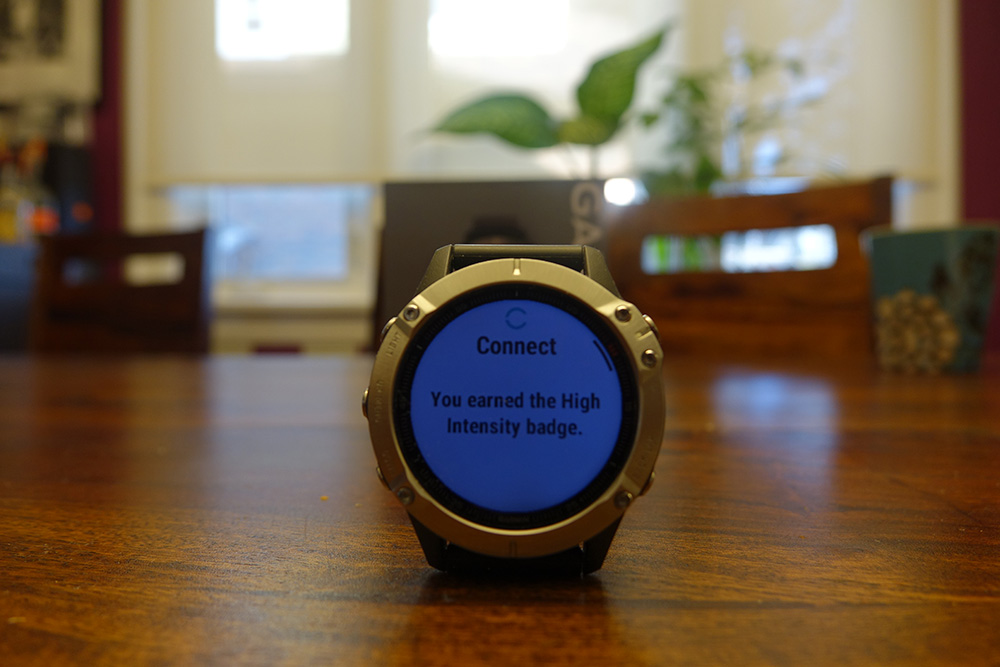
Using the watch might be daunting for some: it has five buttons, three on the left and two on the right, each of which is labeled: up-menu, light, down, back-lap, and select. I was disappointed to realize that the 260 x 260 screen is not touch sensitive.
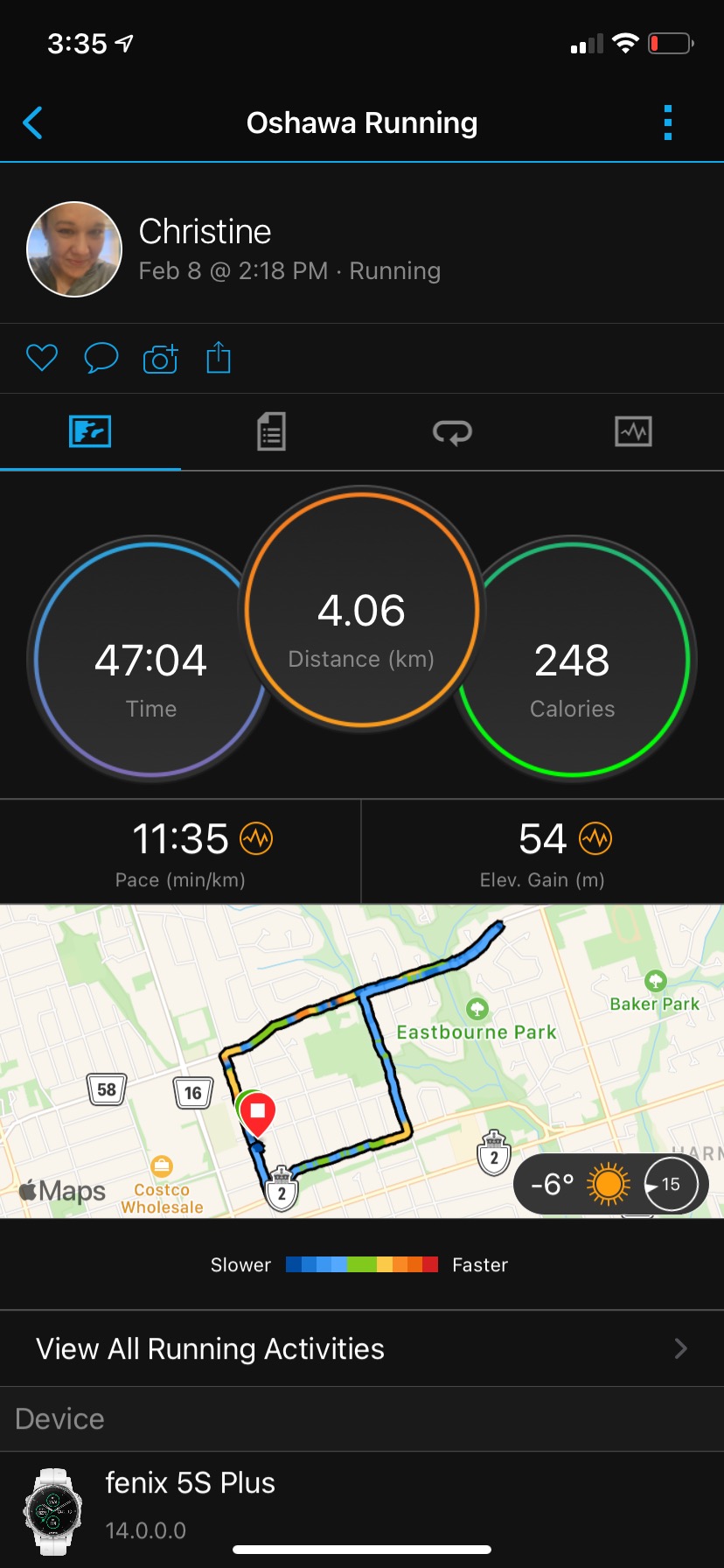
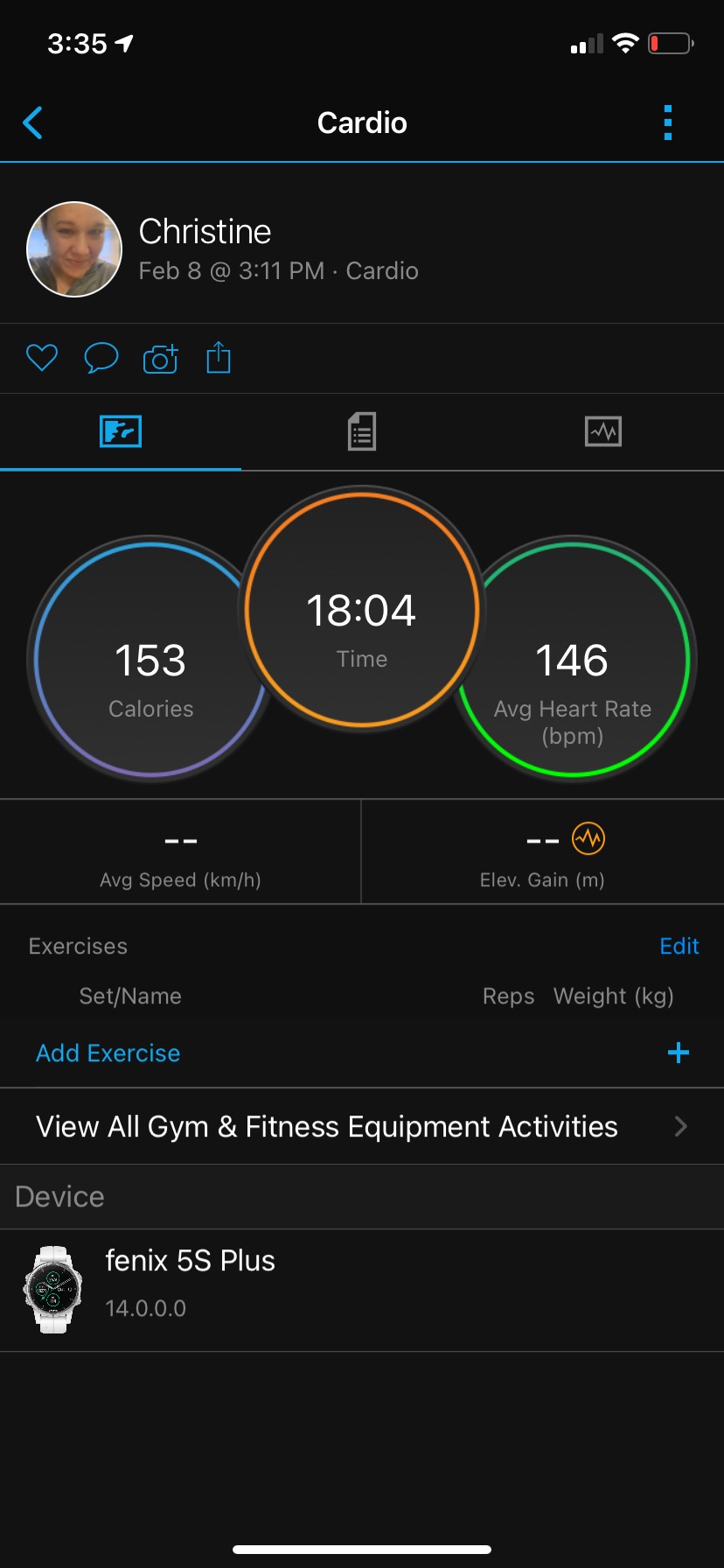 Instantly, I loved the app and the tons of information it shows at a glance, including heart rate, body battery (estimating changing energy levels through the day, calculated by analyzing things like heart rate variability, stress, sleep quality, and activity), stress, steps, floors, calories, and respiration. As new data is added or calculated, like sleep, it will appear and you can adjust the view to your liking.
Instantly, I loved the app and the tons of information it shows at a glance, including heart rate, body battery (estimating changing energy levels through the day, calculated by analyzing things like heart rate variability, stress, sleep quality, and activity), stress, steps, floors, calories, and respiration. As new data is added or calculated, like sleep, it will appear and you can adjust the view to your liking.
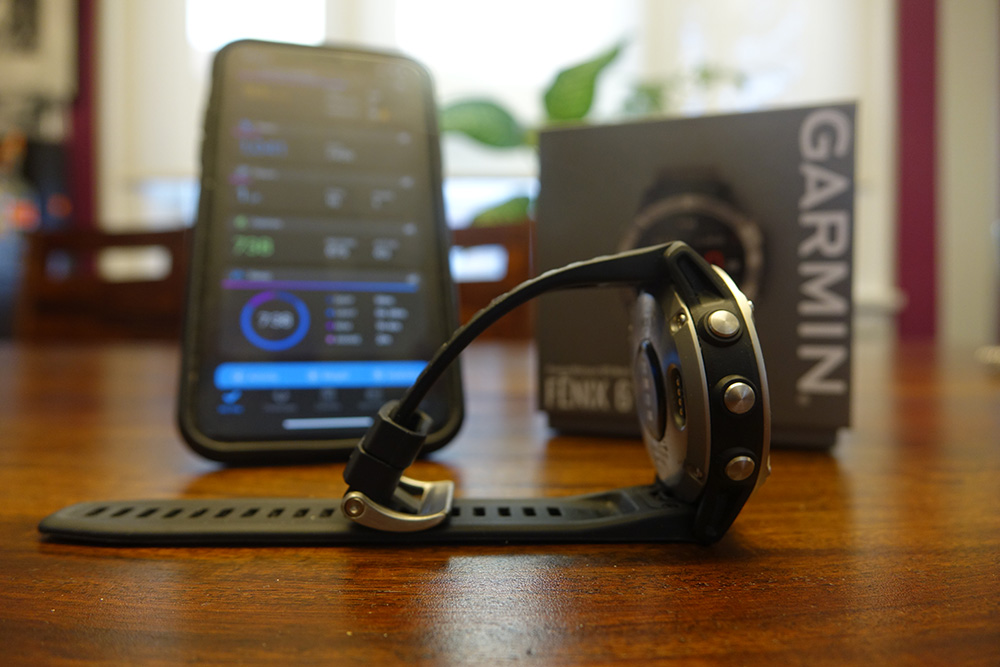
Starting an activity was fairly simple from the watch, which focuses on more intense activities first, from snowboarding to triathlon. My first workout was an afternoon run/jog/power walk and the watch tracked it beautifully, uploading all of the essential stats after I had arrived home, including a GPS log of the route. The next day, I switched to a cardio exercise at home, following a 20-minute workout video. I selected cardio workout for this, tapped the button to begin tracking. Press again when the workout is over, save, and voila! The workout stats are added to the app within a few seconds.
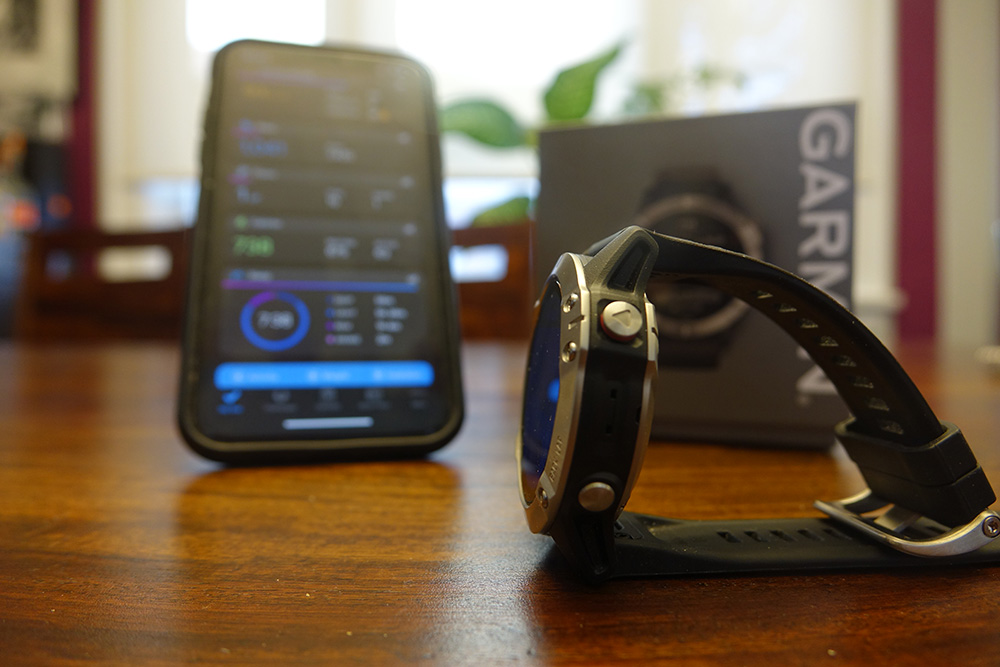
When going for a run, the GPS tracking comes in really handy, accurately tracking your route and speed. For those who engage in specific sports, there are also things like ski maps, golf courses, and climbing maps. In total, it has more than 20 built-in sports apps and performance metrics.
Other health tracking data you can get includes pulse oximetry to measure blood oxygen level, VO2 max to see your overall cardio fitness level, and even pregnancy tracking. Plus, it provides notifications for things like incoming calls and social media updates; and you can control music playback. If you set up Garmin Pay, you can also use the watch for contactless payments at certain stores and restaurants.
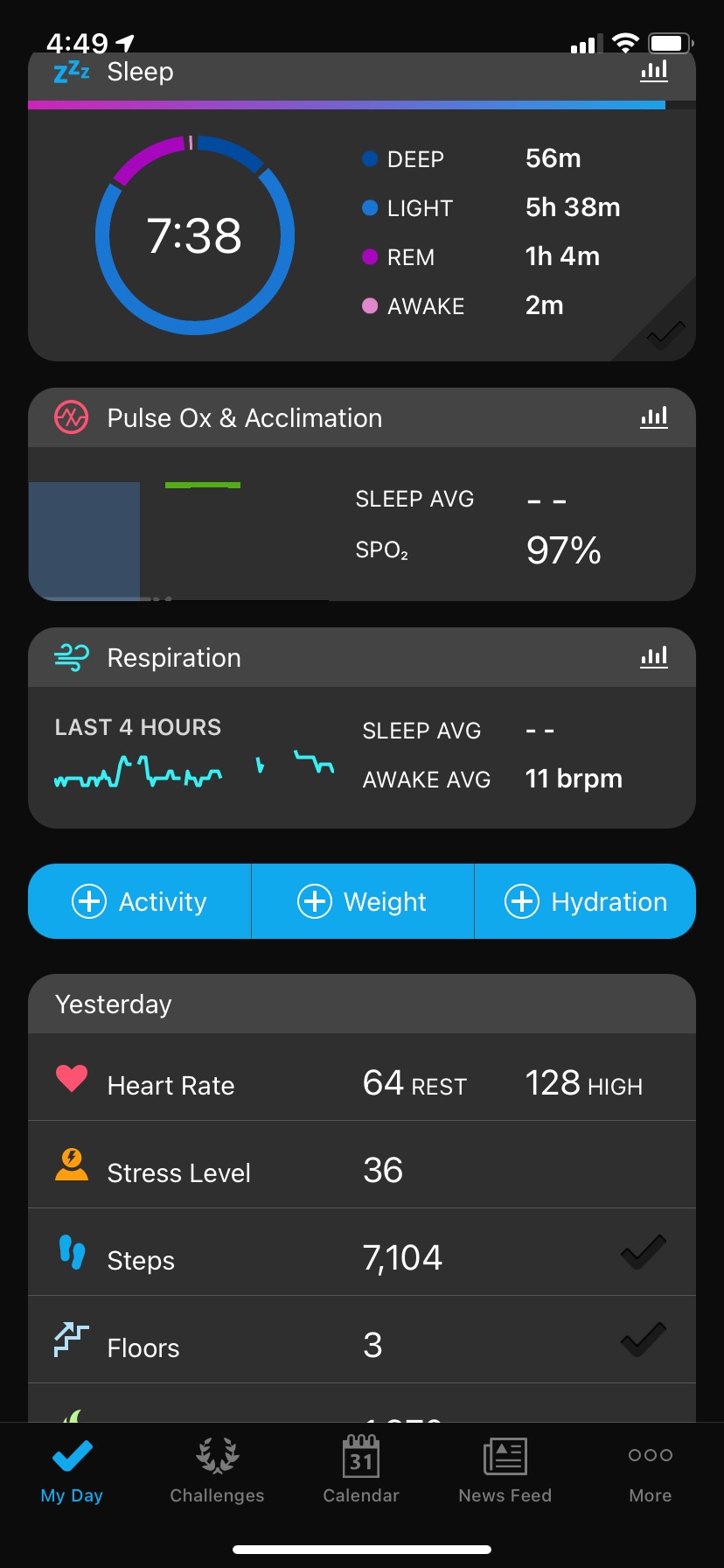
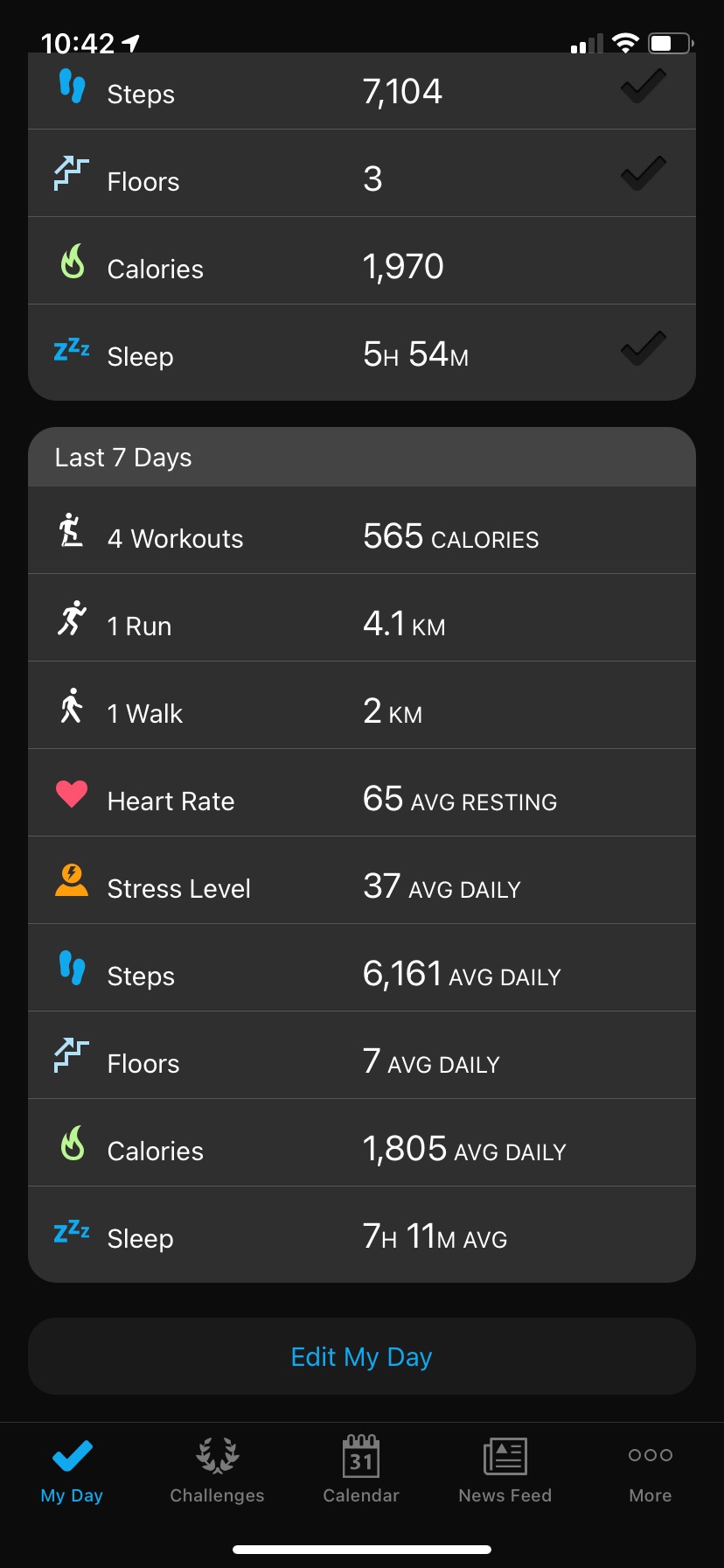 The best part about this watch is the battery life: because the screen is fairly muted, you’ll get up to 14 days of battery life in smartwatch mode, or up to 36 hours in GPS mode. Considering I have to recharge my usual smartwatch at least twice a week, this was a welcome change. Using the Garmin Connect app, you can download different watch faces to customize the look and choose from more than 50 apps to use with it.
The best part about this watch is the battery life: because the screen is fairly muted, you’ll get up to 14 days of battery life in smartwatch mode, or up to 36 hours in GPS mode. Considering I have to recharge my usual smartwatch at least twice a week, this was a welcome change. Using the Garmin Connect app, you can download different watch faces to customize the look and choose from more than 50 apps to use with it.
I’m not a golfer, skier, or climber, but those who are into those types of activities will appreciate the topography maps for skiing, golf courses, and climbs.
Garmin Fenix 5S Plus review
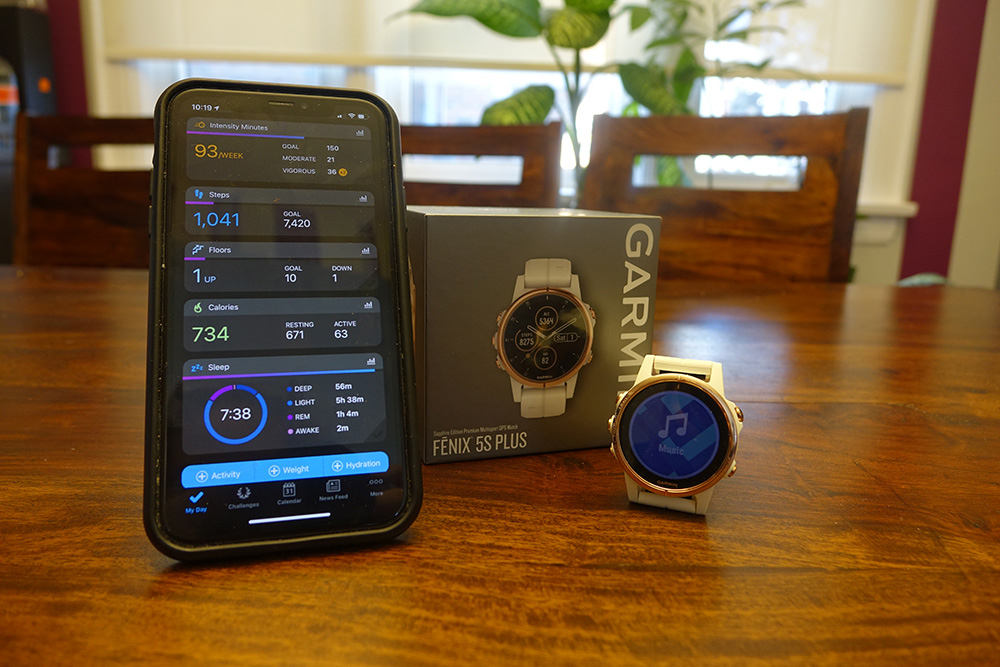
As noted, the Garmin 5S Plus is designed for smaller wrists so I was instantly intrigued with this model since I have a fairly small wrist and found the Fenix 6 to be heavy on my hand after all-day and night wear. The feminine side in me also loves the rose gold/white finish of the version I tested, though keep in mind that it’s much easier to get it dirty. And, with all Garmin smartwatches, you can always swap the band. It was indeed much more comfortable to wear all day than the Fenix 6 but it was still larger than other smartwatches I’ve worn that are more comfortable to wear when sleeping.
Set up was super easy once again, with the app automatically recognizing the device, then sending a six-digit pairing code to initiate the process. Like the Fenix 6, it does not have a touchscreen – operation is via five buttons around the perimeter. While working out, it tracked everything as seamlessly as the Fenix 6, though I did notice that I had to manually add cardio, run, and walk to the list of workouts as they did not come pre-loaded – the watch focuses on more intense activities instead.
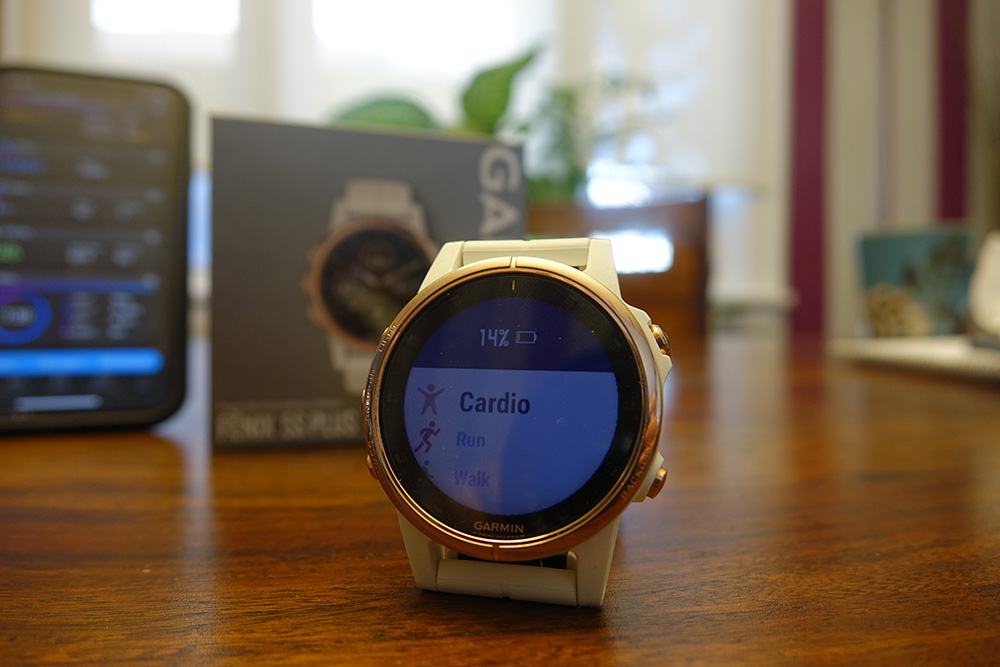
Like the Fenix 6, it’s also a rugged smartwatch that is water-resistant and can track your fitness and activity, heart rate, and sleep, play music, log GPS data, and more. It comes with the same pre-loaded topographical maps as well that golfers, climbers, and skiiers will love. It, too only operates through buttons – there’s no touch screen. However, there’s no Sp02 measurements, which is a bummer and could be a dealbreaker for some.
You can store and play up to 500 songs on the device in the 16GB of internal memory and use Bluetooth headphones or earbuds, which is useful. And you can enjoy all of the same Garmin Connect features, including pregnancy tracking, downloading different screens and apps. You also get the same notifications for incoming calls, social media updates, e-mails, calendar items, and more, and can use Garmin Pay.
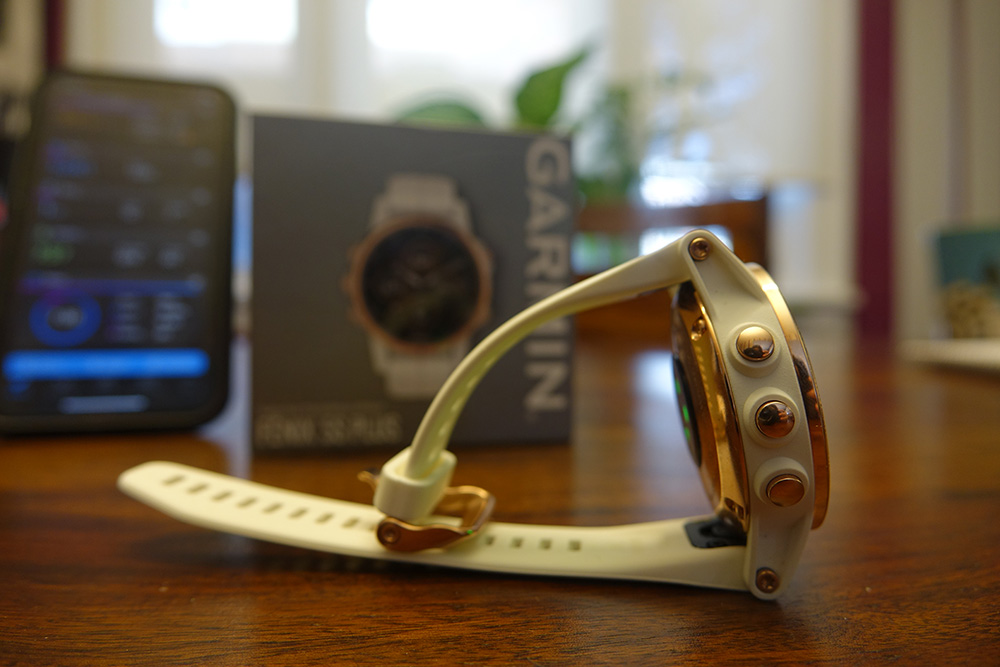
The battery only lasts half as long at seven days (11 hours with GPS, 4.5 hours with music as well), but that’s still world’s above most smartwatches.
The LCD is slightly lower resolution than the Fenix 6 at 240 x 240 but uses sapphire glass that adds extra toughness and resistance to scratches. This model also adds camera, music, and gesture/motion controls so you can do things like set the backlight to turn on automatically whenever you raise your arm up to your face.
For serious athletes more so than novices, as reflected in the price, this model also includes a compass, altimeter, barometer, elevation tracking, running and distance tracking, and more so you get a detailed picture of your exercises, activities, and sports.
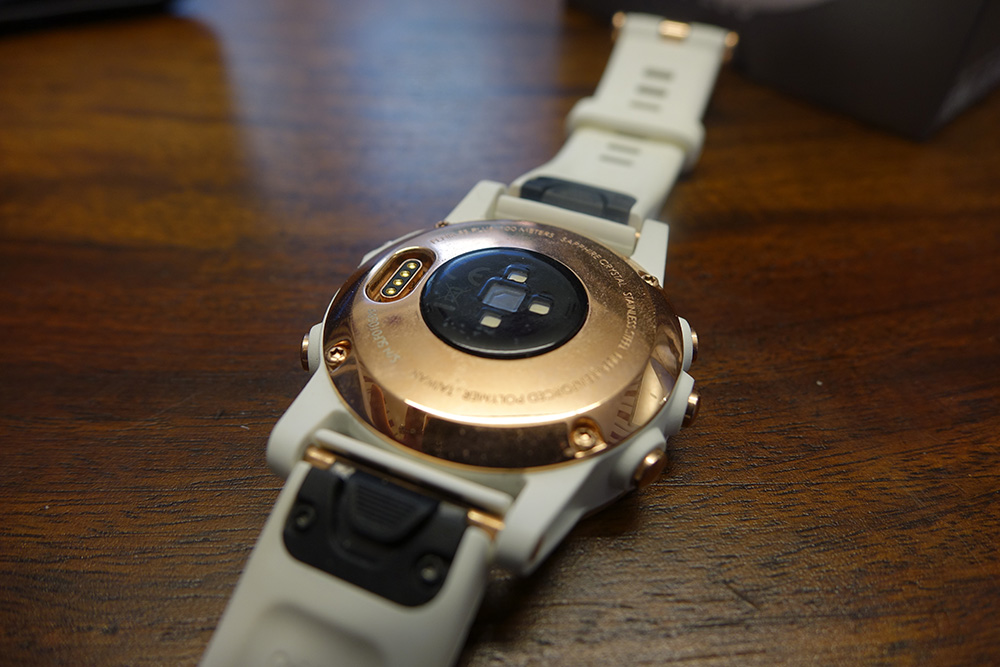
The Fenix 5S Plus is a decent alternative to the Fenix 6 for those who want something that looks slightly more delicate and fashionable versus sporty. Don’t let the look fool you, though, as it still tracks plenty of serious stats for serious athletes. That said, the missing Sp02 measurements could be a dealbreaker if that’s a metric you find important to track.
Garmin Fenix 5X Plus review
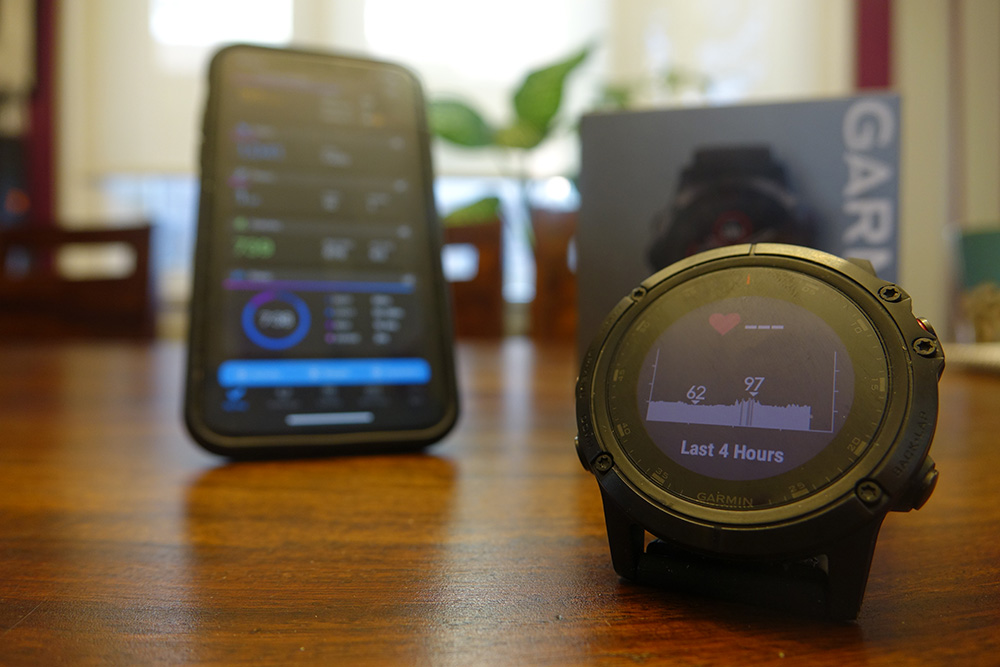
Last but not least, I tried out the Garmin Fenix 5X Plus, which is the largest of the three models with a much wider and thicker bezel around the perimeter of the face. This can get in the way sometimes if you toss and turn a lot while sleeping. But it also means it employs the most rugged look of the three. And there’s good reason: this watch, once again, includes many of the same features and functions but adds Pulse OX Acclimation. This will come in handy for those who do a lot of hiking and climbing but isn’t really a selling feature for the average person. That said, if you want to get pulse oximeter measurements, you should get this one over the 5S Plus, regardless.
This one was just as easy to set up, with instant pairing to the app and my phone using a six-digit code. Like the others, you control it via five buttons around the perimeter – the screen is not touch-enabled. This smartwatch also offers distance, running, and elevation tracking.
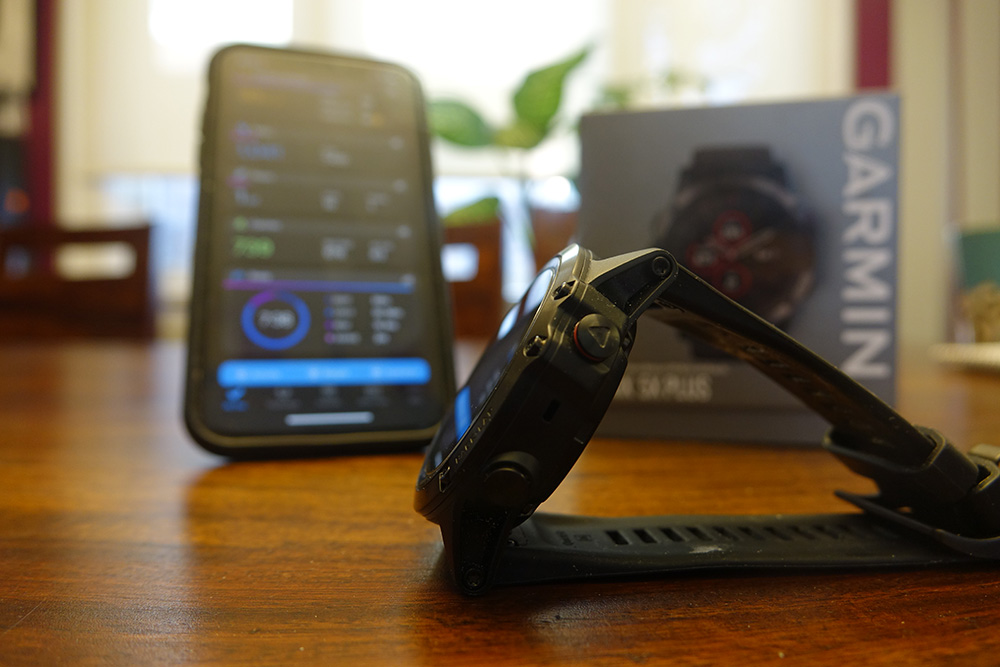
The Fenix 5X Plus also offers the most impressive battery life of the three at up to 20 days (32 hours with GPS and 13 hours with GPS and music.) Beyond the blood oxygen saturation data at high altitudes, the design, and the battery life, it offers a pretty much identical feature set to the 5S Plus.
Other observations
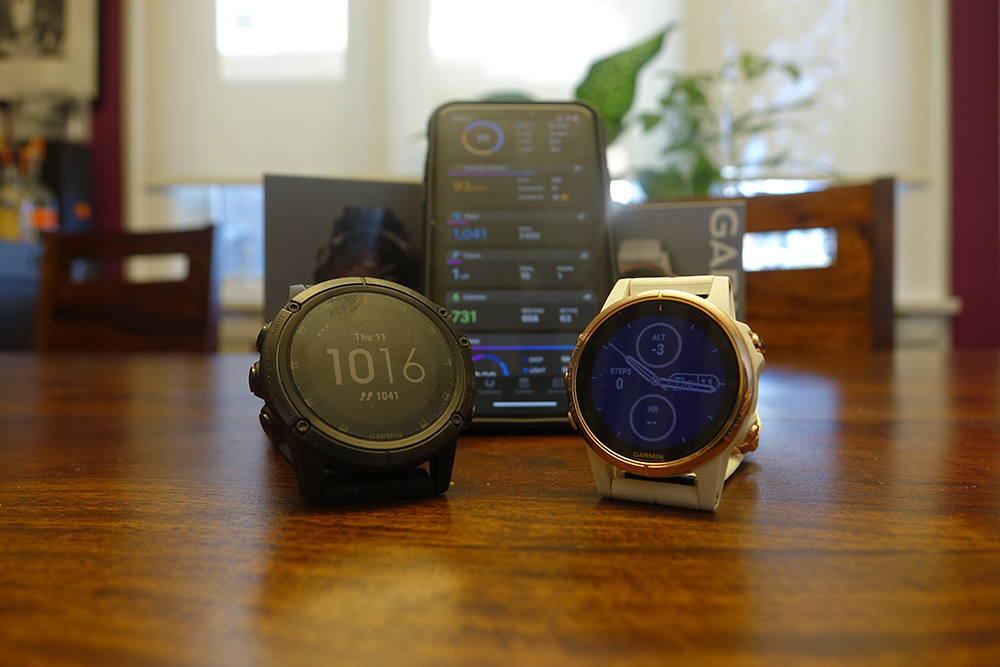
As a long-time user of a rival smartwatch brand, I am very tempted to switch to Garmin after reviewing these three devices. The app cleanly lays data out for you, allowing you to add and remove metrics as you desire. There is a bit of a learning curve with feature-rich models like these three, as there’s so much you can do, and for average users, a lot of features you might not even use.
If you opt for one of these watches because of the advanced metrics, it’s advisable to dedicate some time to reading the manual and researching the Garmin website to learn about everything you can do with these watches that pertain to the specific types of activities and/or sports you engage in: each user will have a unique and customized experience, whether you trail run, hike, climb, or golf, for example.
I also noticed that there was a marked difference between the sleep data recorded by these models and the smartwatch I own, which I kept on the opposite wrist while reviewing these. This came namely with awake minutes: where my smartwatch would log over an hour of awake time each night, the Garmin watches would log these same periods as periods of light sleep. Because of this, Garmin would report that I got at least an hour more sleep every night than my smartwatch would.
Bottom line about the Garmin Fenix 6, 5S Plus, and 5X Plus
All three of these smartwatches are solid options, particularly for sports enthusiasts and athletes, but keep in mind that this is reflected in the pricing. If you’re just an average joe who loves to exercise, Garmin has other devices that will be more suitable, like the vivoactive line.
That said, if your activity of choice is running, hiking, climbing, or you’re pretty serious about your health and exercise and want to make sure you keep track of all metrics, including health stats, performance, training, and even your favourite golf courses or mountain climbs, these will be worth spending the extra bucks on. Even as someone who just tries to workout at home every day and go for weekly runs, jogs, and power walks, I loved the detailed insights I got with these watches that tell me a lot about my health that go way beyond just exercise.
Naturally, the Fenix 6 includes every stat under the sun you could possibly want, including Sp02 and Vo2 max scores, along with ample internal memory to store multiple playlists of music and download tons of third-party apps. There’s no 3G option, but this might not matter; and built-in GPS means you can keep track of running routes without needing your phone anyway.
With the Fenix 5S Plus and 5X Plus selling at pretty much the same price, it will come down to the features that are most important to you as well as the design. While the 5X Plus seemingly offers more in terms of features, along with a much better battery life, the 5S Plus is significantly smaller and better suited to small wrists. But it does sacrifice in some features.
Bottom line: my favourite of the three was the Fenix 6, which includes plenty of features to match a variety of sport types along with really great battery life, built-in GPS, Sp02 monitoring, Vo2 max measurements, plenty of internal storage, and the highest-resolution screen. The main reason to choose the 5S Plus over the 5X Plus if you’re looking at these two would be for the design. But in terms of feature set, if you can live with the massive size of the Fenix 5X Plus (51mm face versus 42mm on the 5S Plus), it’s worth getting for the plentiful feature upgrades.
Check out all three smartwatches – the Garmin Fenix 6, Garmin Fenix 5S Plus, and Garmin Fenix 5X Plus – at Best Buy Online.







